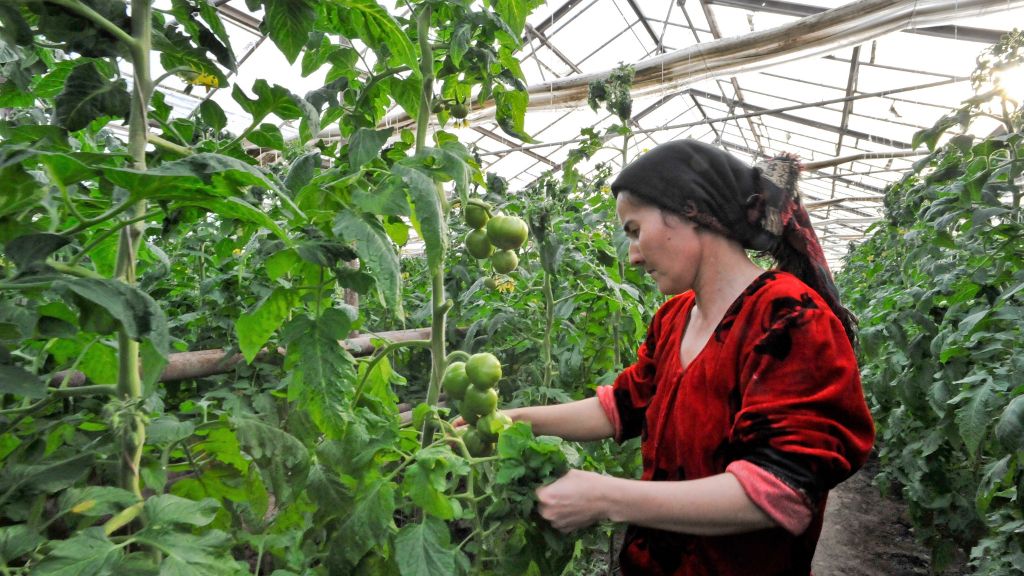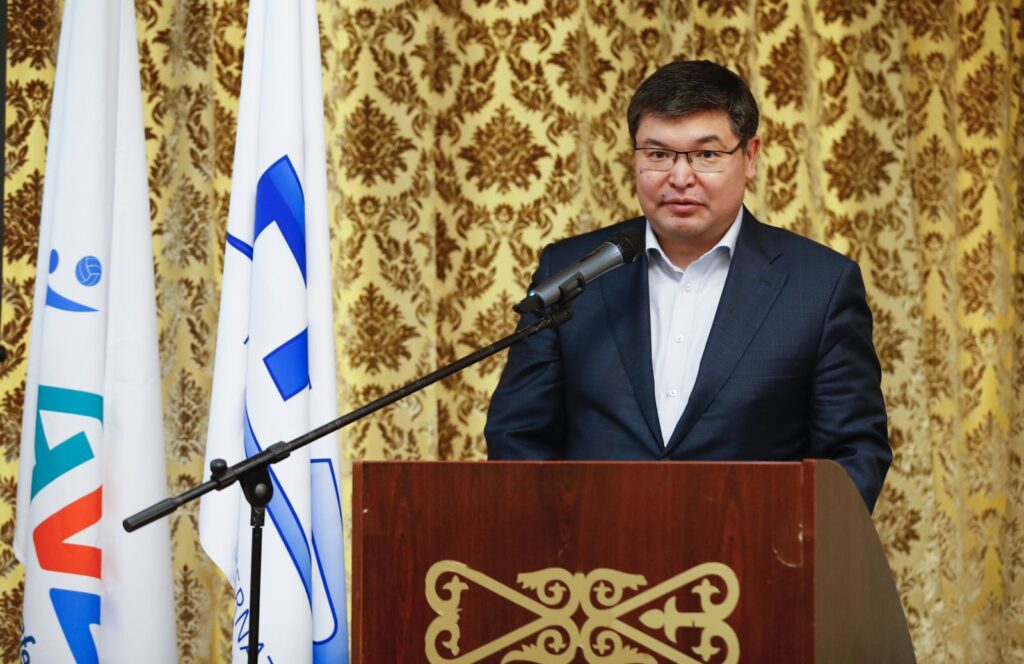BISHKEK (TCA) — Business activity of the female population has increased in Central Asia countries in recent years and the number of enterprises headed by women is growing.
Female entrepreneurship appeared in Central Asia in the early 1990s, after the collapse of the Soviet Union when women entrepreneurs were shuttle sellers, or at best, owners of beauty salons. The situation has now changed qualitatively. Women are represented not only in the traditional sectors of the economy, but also in the agricultural industry, construction, high-tech industries, and banking.
Nevertheless, women-led business enterprises are smaller and are growing more slowly because women have lower start-up capital, and they spend less time for business because they have to take care of their children and maintain households.
Kazakhstan leads
Among the countries of the region, women are most active in Kazakhstan due to the better conditions created by the State. They are provided with grants, concessional lending and business development programs.
As a result, the number of small and medium businesses headed by women is growing faster than the total SMEs’ number.
Women contribute 39.5% of Kazakhstan’s GDP. More than 41.5% of SMEs are now headed by women, and in some regions like Kostanay and Karaganda oblasts, the share of SMEs managed by women has reached 48%, the official site of the President of Kazakhstan, akorda.kz, reports.
Business areas
The main and traditional activities for women entrepreneurs in Kazakhstan are education, healthcare and social services, real estate operations, wholesale and retail trade, and accommodation and food services.
In Tajikistan, female business is concentrated in low-growth and low-income sectors including handicraft, carpet weaving, farming, and small trade. Home-seamstresses, bakers, confectioners, and sellers of agricultural products from family land plots work informally.
Starting a business is a necessary measure as a survival strategy for most women in Tajikistan. They go into business unprepared, overcoming the most difficult barriers, conflicts and crises, experts say. But over the past five years, another trend has been observed — there are women for whom doing business has become a conscious choice.
According to the Association of Business Women of Uzbekistan, there are more than 120 thousand women entrepreneurs in the country.
The association has an ambitious goal to increase the number of its members 1.5-fold this year. Women entrepreneurs intend to direct their capital into large-scale production — growing and processing of agricultural products, with their subsequent sale inside the country and abroad.
Uzbek women create greenhouses using alternative energy sources, with high productivity due to modern technologies.
Women’s entrepreneurship in Turkmenistan is mainly concentrated in services and trade. However, in recent years, women participate in various areas of business, using the capabilities of government programs to support entrepreneurship including lending to promising projects, centralasia.news reported.
Under the women’s leadership, construction companies, greenhouses, enterprises for the production of food products, and agricultural processing plants operate in Turkmenistan.
Unequal conditions
Women in Central Asia traditionally have lesser rights, especially in terms of property. As a rule, the property belongs to the male representatives.
Women are initially in unequal conditions. They have less time for self-development and education, because they have to care about their families and children.
Studies show that women are more law-abiding, focused on sustainable business strategies and conduct their business more responsibly and cautiously. Therefore, it is beneficial to support female entrepreneurship.
By developing socially oriented businesses, women help their states solve pressing social problems.
State support
In Uzbekistan, the Public Fund for Support of Women and the Family annually allocates $12 million to commercial banks for the development of female entrepreneurship. At least 50% of these funds should be directed to the development of businesses of women living in rural areas.
By the decision of Uzbek President Shavkat Mirziyoyev, concessional loans are allocated to the population and business entities at 8% per annum for a period of not more than three years with a 6-month grace period.
Women’s entrepreneurship centers are being set up throughout the country to retrain women in the professions demanded in the labor market.
In Kazakhstan, financial support for women is provided by Damu Entrepreneurship Development Fund, which implements the Program for allocation of funds in second-tier banks for the subsequent micro-lending of women entrepreneurship.
The Damu Fund also implements the Program for Financing SMEs through a loan from the Asian Development Bank. According to the program, at least 24% of the total loans should support women entrepreneurs.
As a part of the Business Roadmap 2020 program, 1103 projects of women entrepreneurs (23% of the total projects) have received subsidies, akorda.kz reports.
In Tajikistan, the state invests 2 million somoni every year through the presidential grant system to develop women’s entrepreneurship. About 2.6 thousand jobs were created due to the presidential grants, the Committee on Women and Family Affairs under the Government of Tajikistan reports.
The National Strategy to enhance the role of women in Tajikistan until 2020 is aimed at creating favorable conditions for the fullest realization of the abilities of women in all spheres of public life. Women entrepreneurs improve their economic and legal literacy in master classes.
In Kyrgyzstan, the government has not yet focused on female entrepreneurship and this issue is mainly solved by international partners.
The Russian-Kyrgyz Development Fund, Aiyl (Agricultural) Bank and RSK Bank are planning to introduce a simplified procedure for issuing loans for women entrepreneurs. The Government also considers providing 40% of the Guarantee Fund’s money to women.
The Russian-Kyrgyz Development Fund’s interest rate is advantageous, about 3-4%, but the Fund provides loans from $200 thousand. Smaller amounts are issued through partner banks which raises interests significantly. Business proposed to reduce the Fund’s threshold for women to $50,000, so that they could borrow directly from the Fund.
More and more women choose entrepreneurial activity in Turkmenistan. They are implementing successful entrepreneurial projects, the Government reports.
The Center for Business Women of Turkmenistan contributes to resolving issues of employment of the female population, especially in the rural area, and raising their professional and educational level.
Donor assistance
Thanks to donor projects, business is developing, new technologies are being introduced and the level of knowledge of women entrepreneurs is rising.
In Kyrgyzstan, the Japan International Cooperation Agency project “One Village — One Product” is being successfully implemented.
Under consideration is the implementation of the next stage of the Women’s Entrepreneurship Development Project supported by the Asian Development Bank in which women entrepreneurs were given 405 loans worth $1.5 million.
Kyrgyzstan was selected as a non-pathfinder country under UN Women Regional Program on gender statistics “Making Every Woman and Girl Count”. The program aims to stimulate a radical shift in the way quality data and statistics on key aspects of gender equality and women’s empowerment are produced and used.
Banks in Kazakhstan support women’s businesses.
In December 2016 and May 2017, Kazakhstan’s ForteBank received from the European Bank for Reconstruction and Development a total of $10 million for the development of female entrepreneurship. In 2018, ForteBank developed its own program for women entrepreneurs, ForteBusiness Woman, and financed about 540 female entrepreneurship projects.
Since February 2019, the EBRD, with the support of the Ministry of National Economy of Kazakhstan, has been implementing the Women Entrepreneurship Conference ’19 (WECON) for women entrepreneurs managing SMEs. For women in business, the EBRD provided financing mechanisms in local currency worth $92 million and allocated five credit lines of $64.6 million.
In Tajikistan, the EBRD’s Women in Business project financed by the Swiss State Secretariat for Economic Affairs is being carried out. The EBRD will provide $8 million to partner financial institutions for further lending to companies run by women, as well as for providing business advice to them.
The Business Women’s Association of Uzbekistan joined the Women’s Entrepreneurship global initiative in 2016 and annually holds events dedicated to the development of women’s entrepreneurship, discussing challenges and ways to solve them, searching for international partners, capacity building and sharing best practices with local women entrepreneurs.
The UNDP conducted business courses for women entrepreneurs in Ashgabat to train them in basic business expansion and optimization skills. The Israeli Embassy in Turkmenistan participated in organizing the workshops. Specialists of Israel’s Agency for International Development Cooperation (MASHAV) shared experience in business development, management and marketing with the Turkmen business women.
Barriers to female entrepreneurship
According to various researches, the main barriers hindering the development of female entrepreneurship in Central Asia are the lack of necessary business experience; lack of time for doing business, as female entrepreneurs are forced to combine the business management with raising children and running households; the problem of obtaining funds for organizing their own business and ensuring its operation; and unequal access to financial resources.
The lack of financial, labor and time resources leads to the fact that small enterprises cannot qualify for large-scale funding, and their own funds are not enough to expand staff and increase production volumes.
According to international experts, the tax burden in Tajikistan is among the highest in the world and it is difficult for start-up businesses there. The ratio of tax paid to profits is more than 67%.
Women are more limited in access to loans than men because they have limited access to household assets — real estate and land.
Objectives
Reducing gender imbalances in the business sector can contribute to the growth of their incomes and the countries’ economies as a whole. To do this, it is necessary to change the trends in the specialization of women’s business for a large and highly profitable business by the expansion of women’s access to technical, vocational and higher education in information and communication technologies, engineering, manufacturing and construction, where there is a gender gap.
The Central Asia governments have to create conditions for women to find work in their homeland, create their own businesses, and not go to Russia, Turkey and other countries to earn money. Development of a social support system for maternity including an increase in the number of kindergartens will contribute to the emergence of new women’s enterprises and the growth of existing ones.








